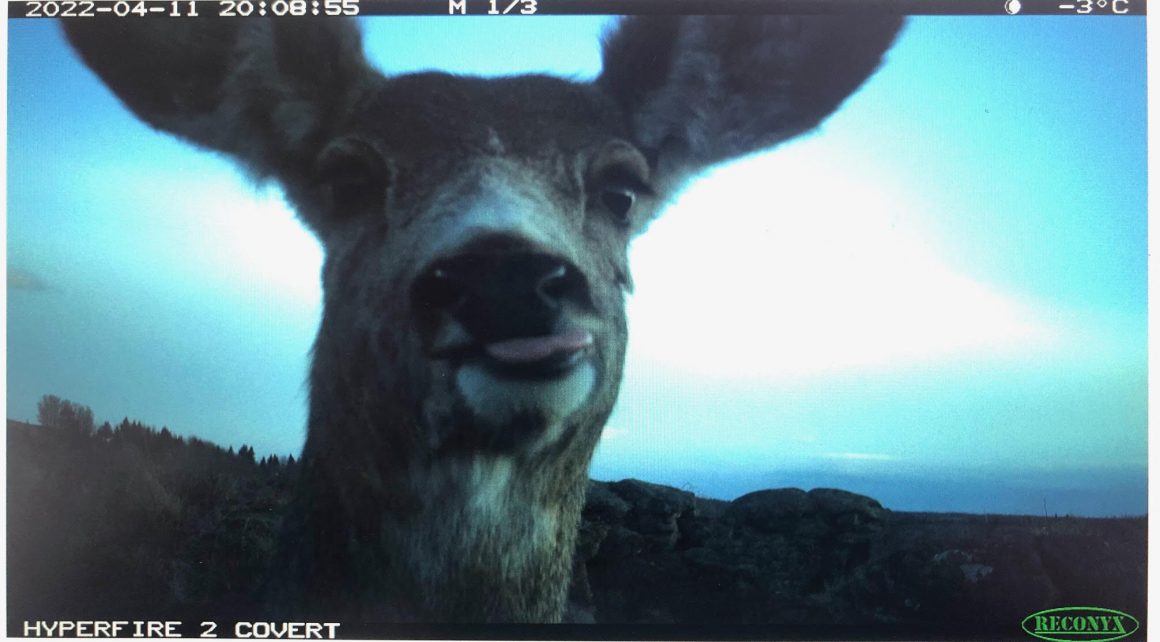
Cohabiting with wildlife in urban environments: University students may hold the key
By Francesca Schoettler, July 25 2023—
Over the past decade, raccoon sightings have become more frequent in various sectors of Calgary. Raccoons are adaptable creatures — they reproduce quickly and operate discreetly, which may pose challenges as their population grows. Their cute appearance often leads people to feed them, causing problems for other wildlife.
Raccoons can easily adapt their diet to include garbage which enables them to thrive in urban environments. Although Calgary is not currently experiencing a raccoon boom, it’s important to acknowledge that raccoons may become a common sight in urban areas. This, along with evidence from coyotes and other wildlife, suggests that our urban landscapes are evolving. The evolution of urban landscapes requires us to find ways to coexist with wildlife and address the challenges that lie ahead.
In an interview with the Gauntlet, Dr. Shelley Alexander, an international canid specialist and the founder of the Canid Conservation Science Lab at the University of Calgary explained several factors that may be at play here, including urban expansion and climate change.

Alexander mentioned two key rules when encountering wildlife: don’t feed them and give them space. These rules align with the same principles that many follow when hiking in the mountains. By following these rules, we can minimize potential encounters and conflicts.
“Those are the two key rules because we don’t want to attract them into our spaces more and then give them space when you encounter them to move away from you and to avoid these interactions,” said Alexander. “Each species is going to have their own nuances on top of that because they all have different behaviours, different tolerances to people and different interests in that relationship with people and so you have to think a little bit differently about those.”
One valuable UCalgary resource that students can turn to for guidance is the Living with Wildlife website. The site offers a framework for understanding how to interact with a number of wildlife — coyotes in particular — as well as a yard audit that people can download to ensure that their yards are wildlife-proof and do not encourage animals to enter.
Alexander noted that coexistence can have various definitions, ranging from peaceful coexistence to situations where conflicts demand intervention.
“Peaceful means that you are living together and coexisting and killing the animal is not the go-to response. You try to allow everyone to have their space and respect that space and learn how to negotiate,” said Alexander.
While it may never be appropriate to kill an animal in a truly peaceful coexistence scenario, certain circumstances may require targeted removal if an animal poses a direct threat to human safety. In evaluating the coexistence between wildlife and humans, it is vital to investigate the underlying factors that drive these conflicts.
“In my experience, once you educate people on how to negotiate that relationship, it becomes very easy and you prevent the conflict from happening,” said Alexander. “However, I also have an endpoint and if we can’t undo that behaviour, I don’t look at coexistence as meaning that people can be subject to constant attack, we don’t allow people to do that to each other.”
We must be attentive to behaviours, educate people on negotiating relationships with wildlife, enforce responsible actions such as leashing pets and avoiding den sites, and mitigate conflicts when necessary.
“The number one in all of coexistence is to have the notion that you’re going to avoid those conflict situations with whatever wildlife it is,” said Alexander.
University students can make significant contributions by considering how their respective disciplines can help build landscapes that accommodate both humans and wildlife.
“Where students can contribute here is to start to think about how we build these landscapes right now in a way that allows animals to have that space and move through undetected as they want to and live out their life history,” said Alexander. “Let’s say someone is in architectural planning, how can they think about redesigning our spaces in a way that allows us to both use those environments.”
It is essential to leverage students’ heightened awareness of global issues and their compassion toward animals. By working collaboratively, Alexander notes that students can design solutions that promote coexistence and positive change in cohabitating with wildlife.
“Students are gifted in finding solutions that are compassionate and respectful of other animals,” said Alexander.
“They have the compassion and the interest in seeing the world be different. Bearing in mind that there are these connections across everything and that we can design things differently, we just need people to have the momentum and the interest to do that,” Alexander continued.
Co-existing with wildlife in urban environments presents both challenges and opportunities and as Shelley noted, university students play a significant role in understanding and shaping this dynamic relationship.
More information on prevention, education, enforcement and mitigation can be found on the Living with Wildlife website.
